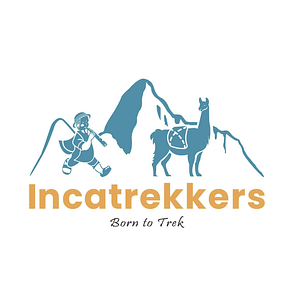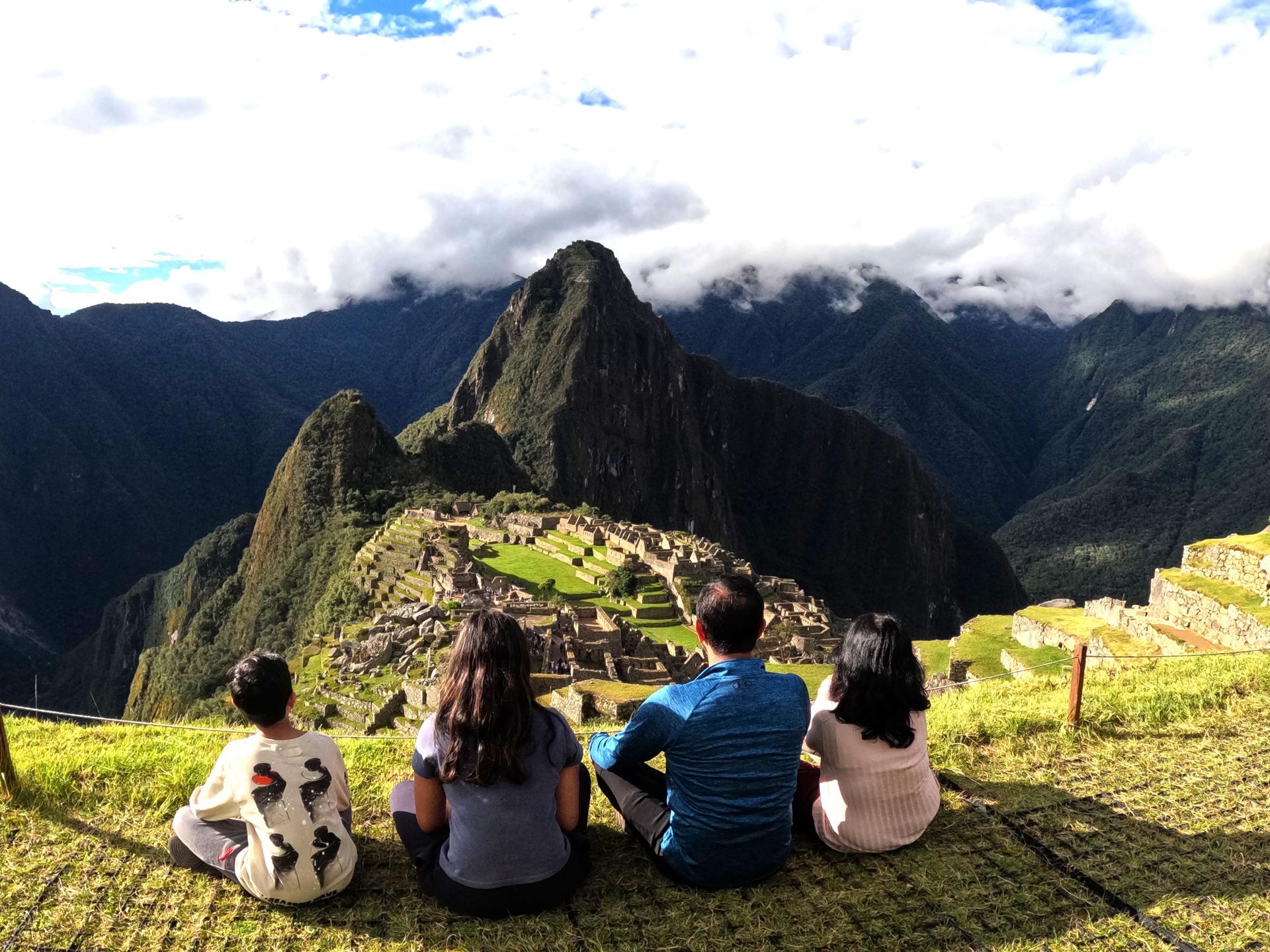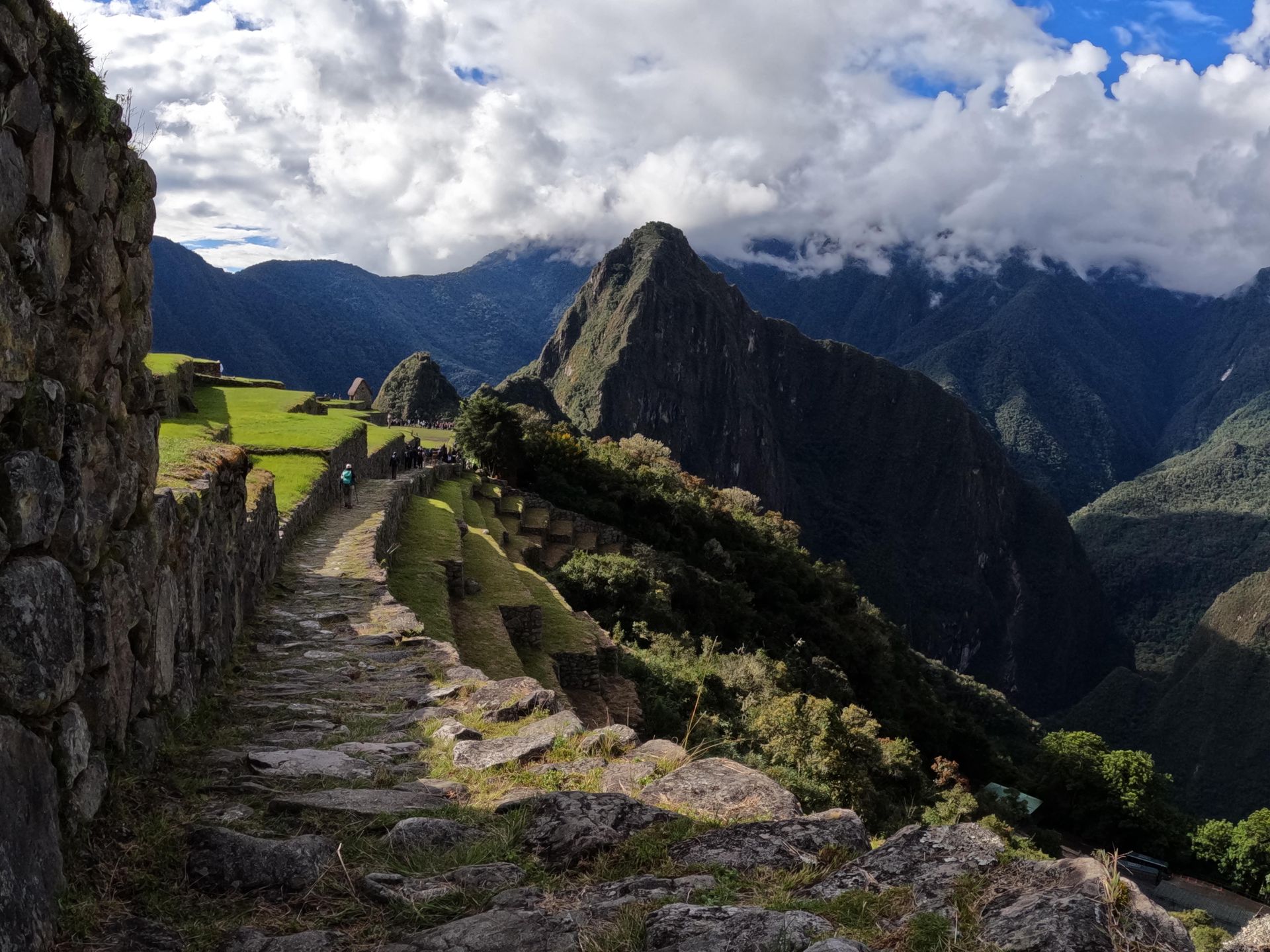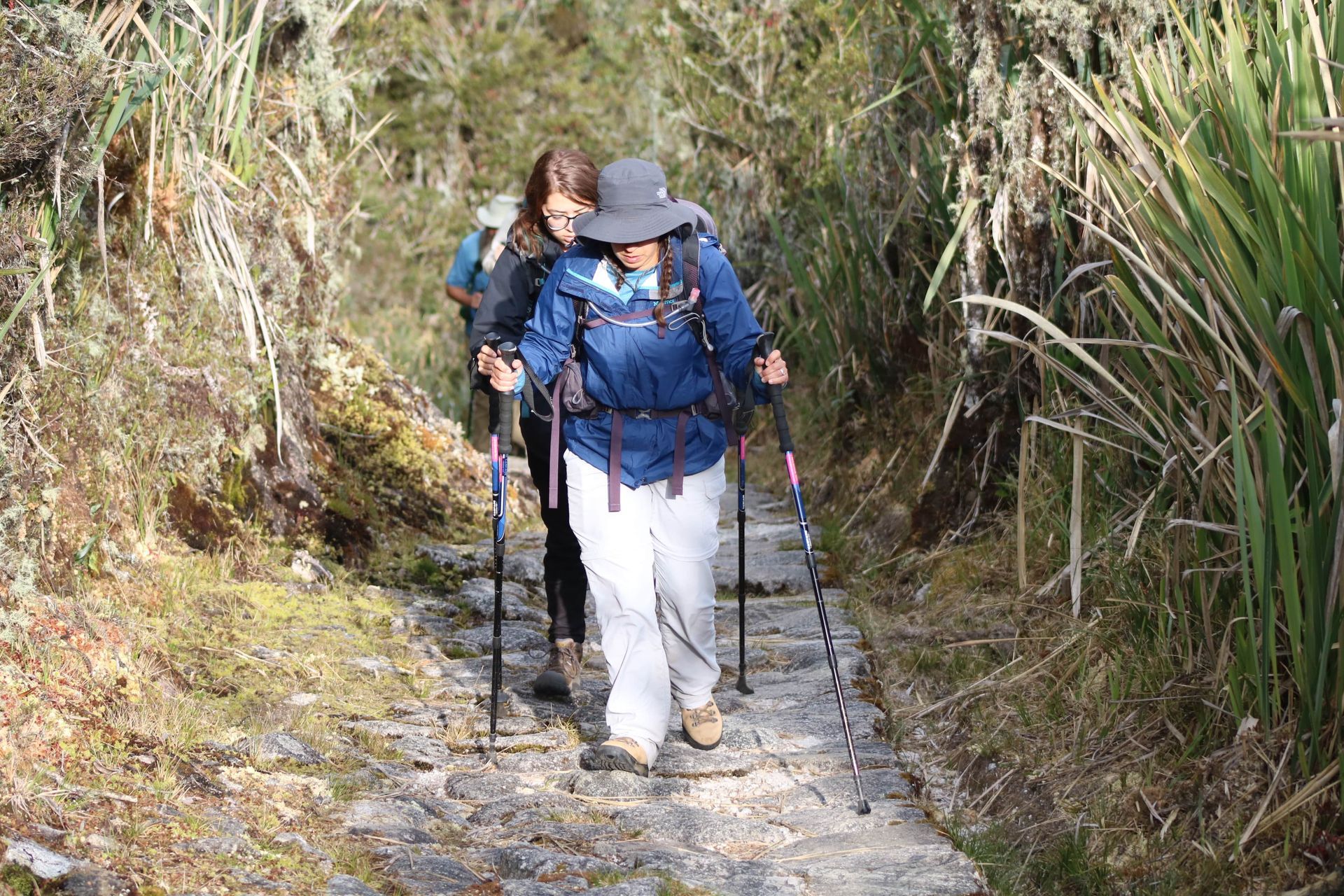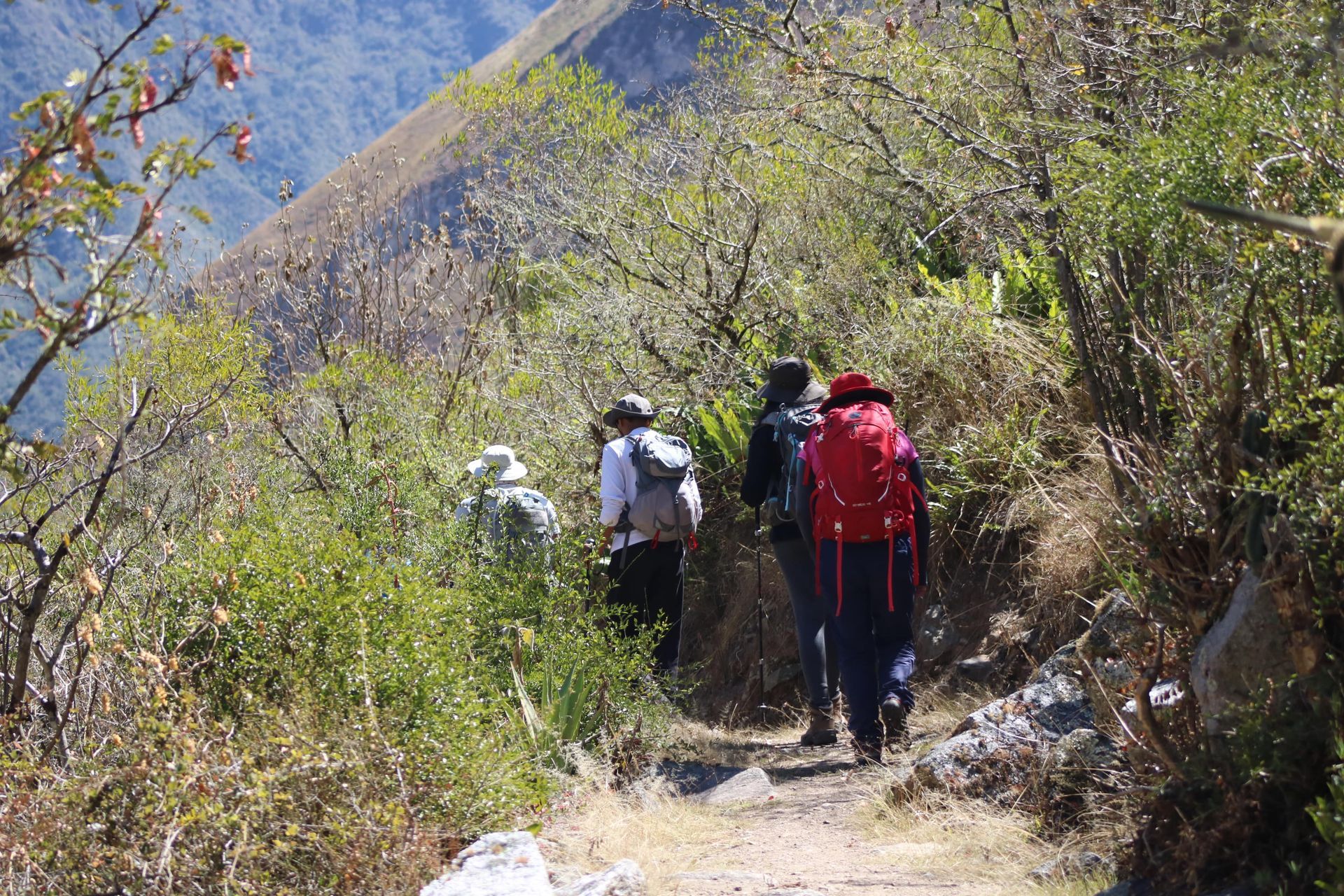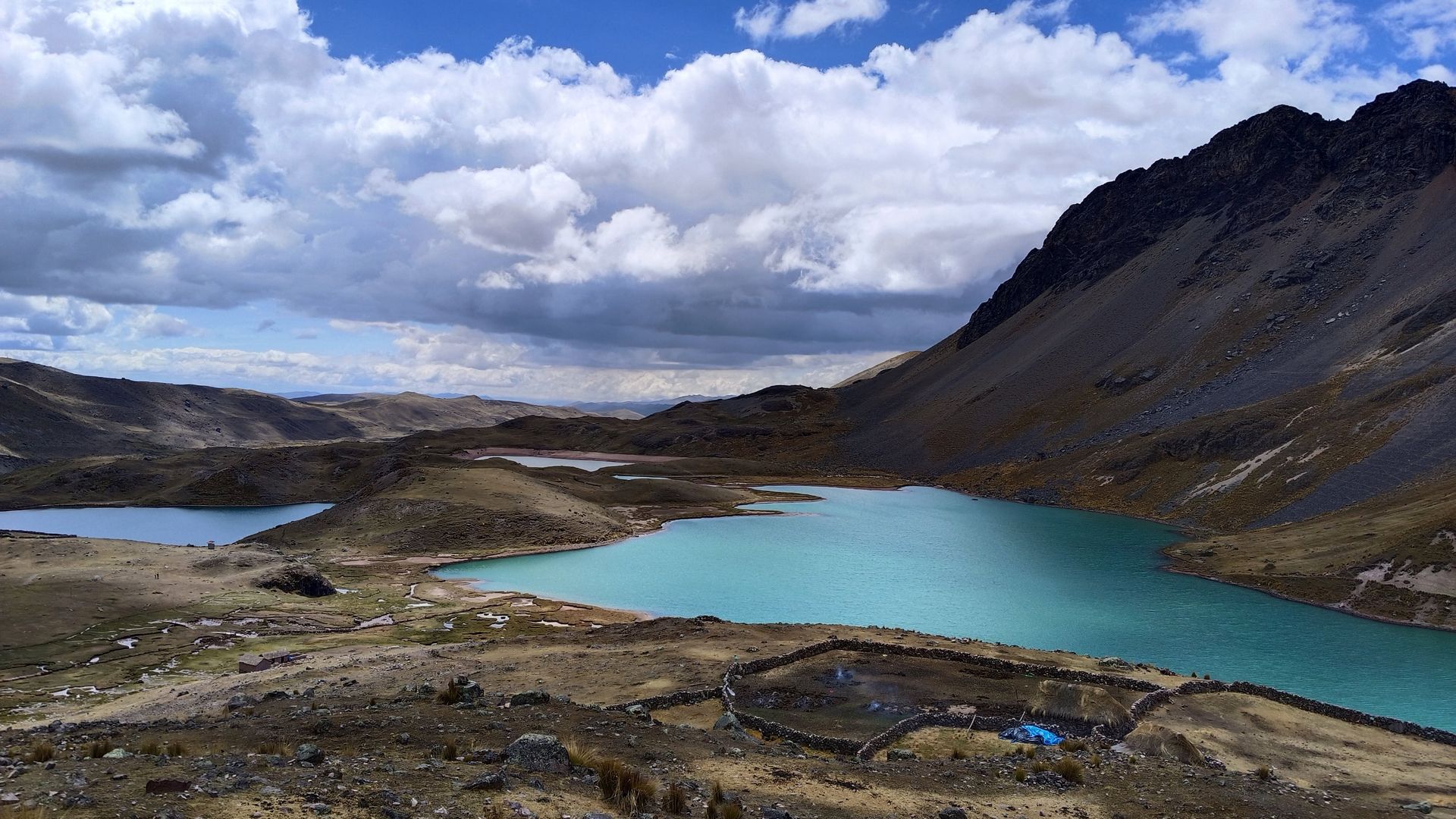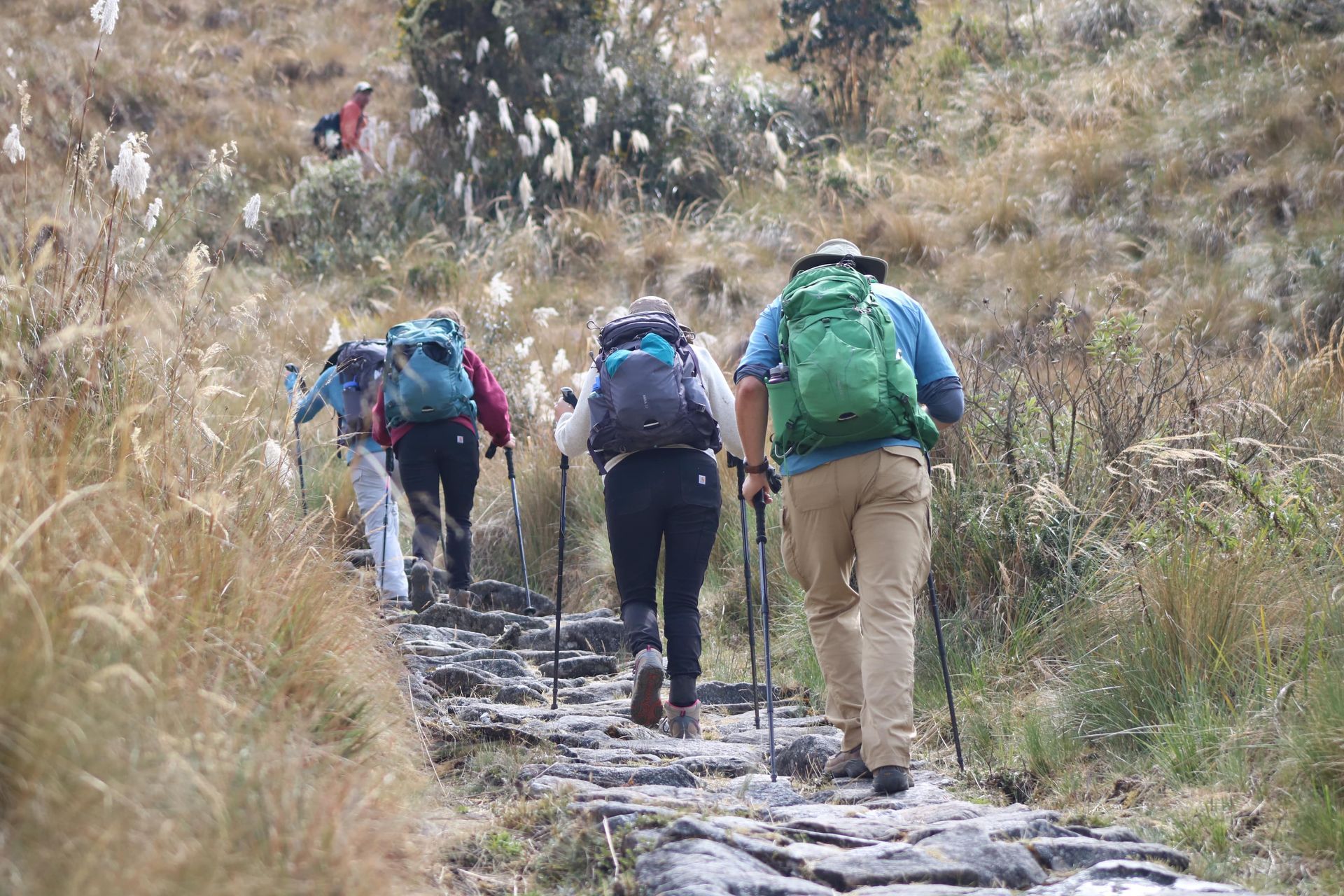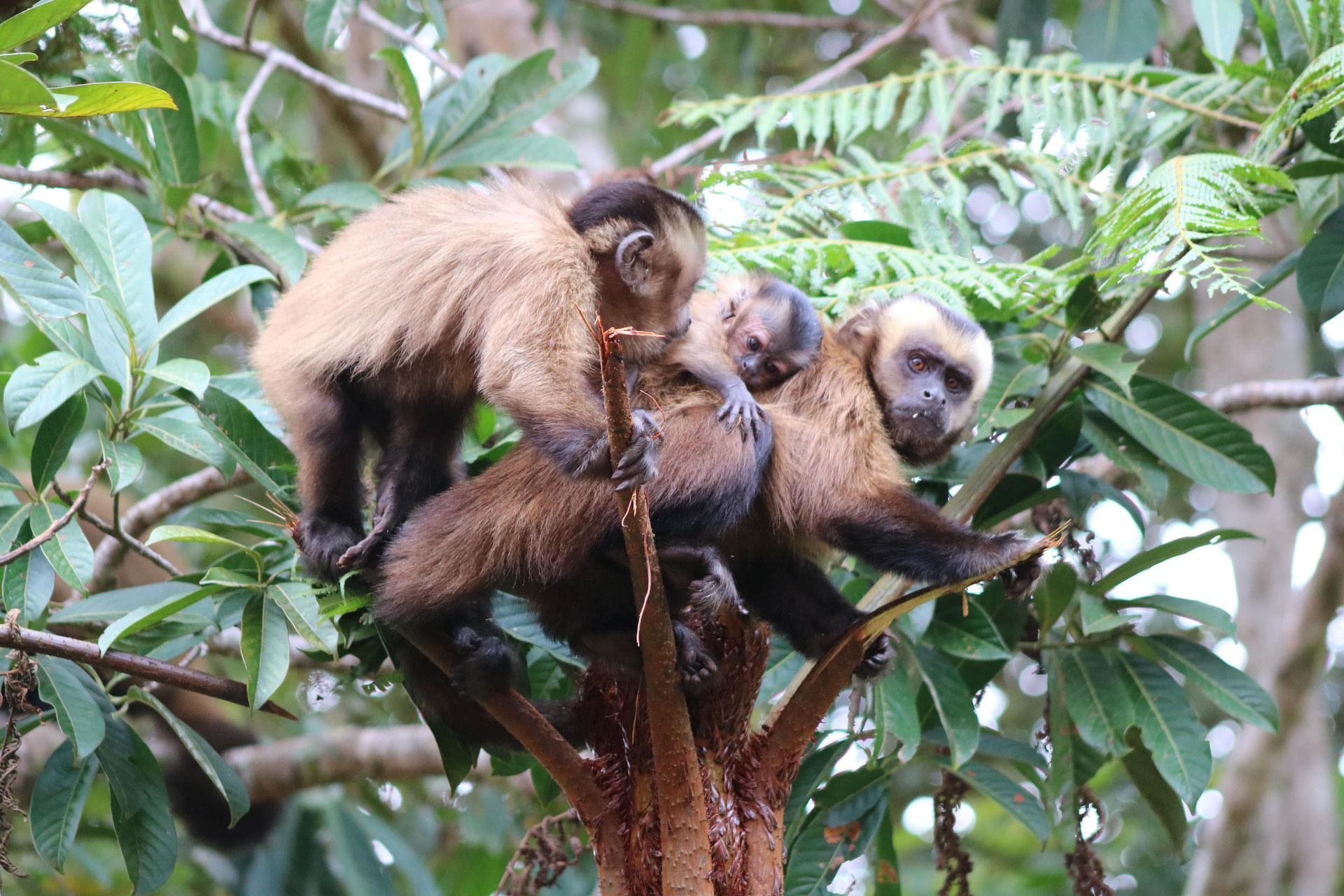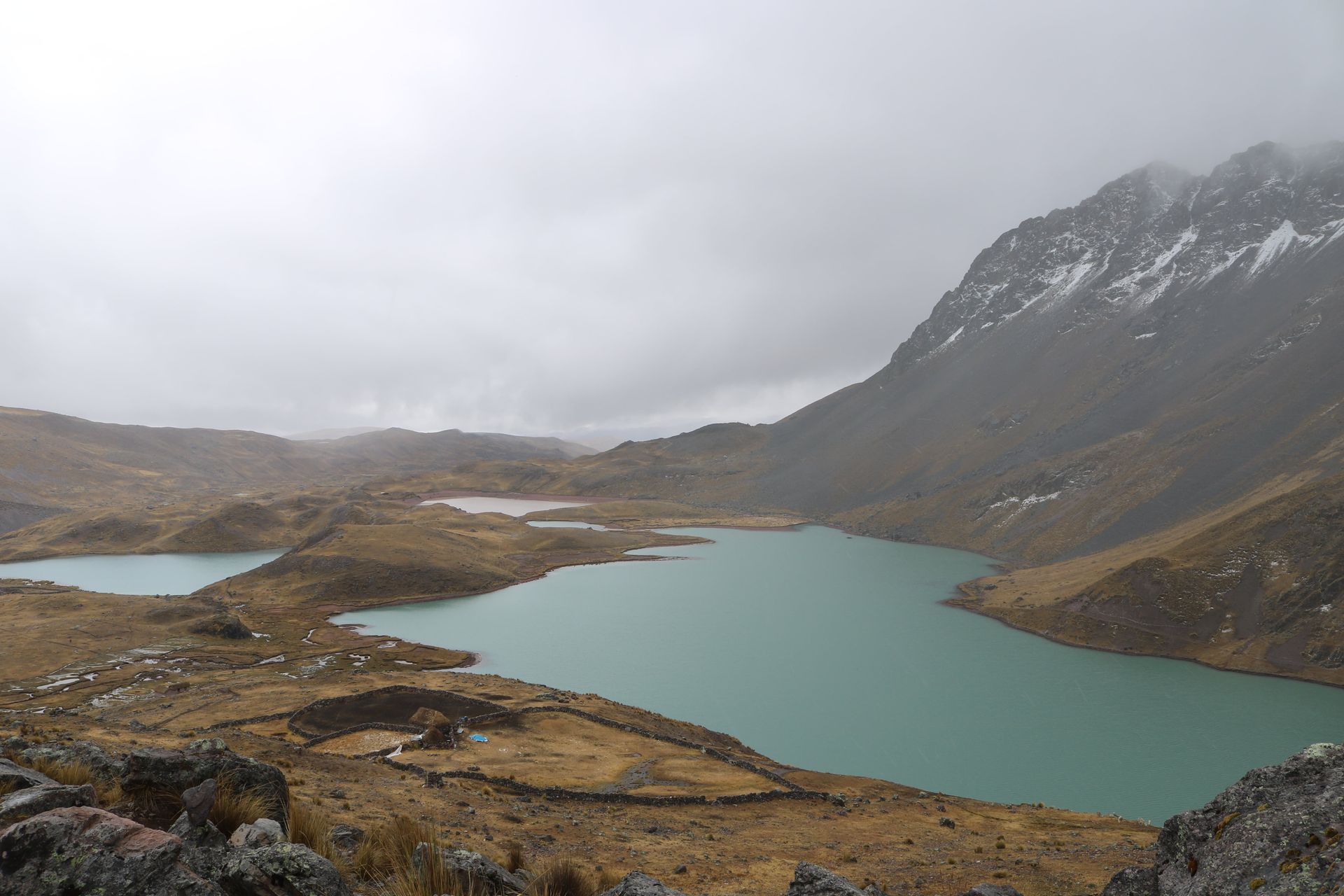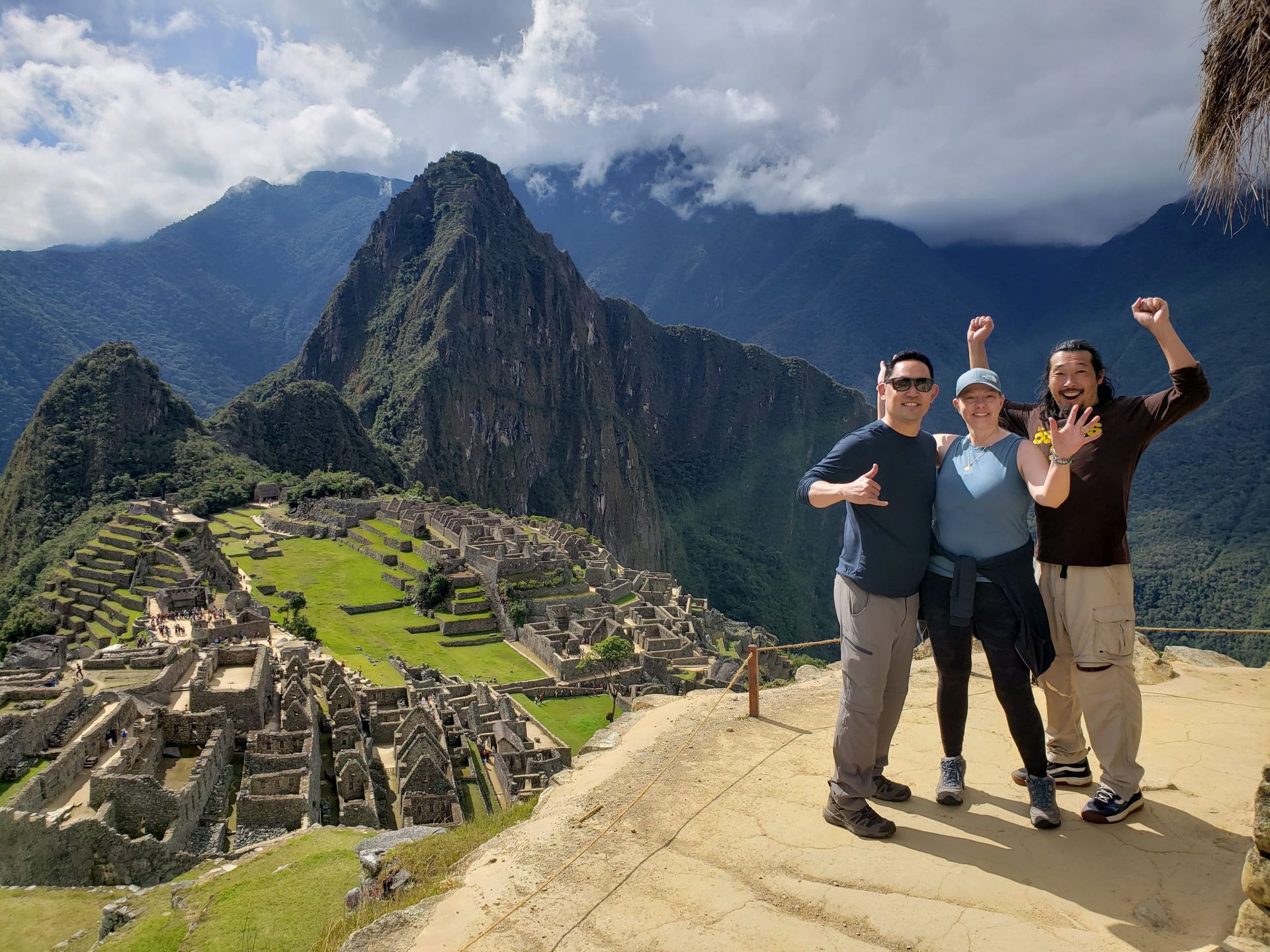The Ultimate Guide to the Lares Trek with Llamas to Machu Picchu
A Memorable Journey through Peru
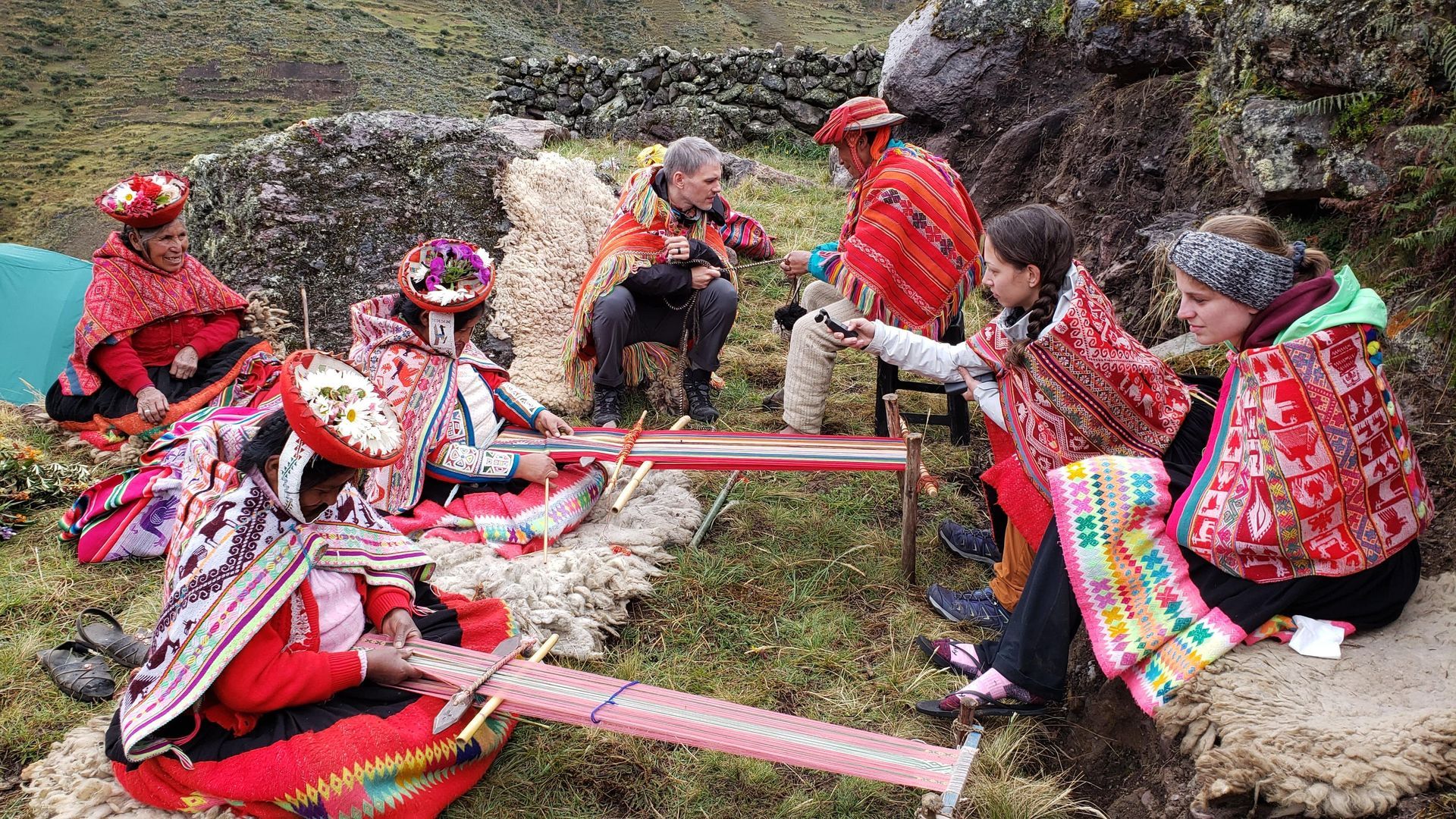
Welcome to Peru, a captivating destination for world travelers! If you're looking for an extraordinary adventure that combines the breathtaking Lares Trek with the charm of llamas, you've come to the right place. In this comprehensive guide, we will take you on a virtual tour of the Lares Trek, showcasing its unique features, stunning landscapes, and cultural experiences. Join us as we unveil hidden gems and insider tips for a truly remarkable journey to the iconic Machu Picchu.
Understanding the Lares Trek:
The Lares Trek is a captivating alternative to the classic Inca Trail, offering an immersive experience for adventurous travelers who wish to explore the mesmerizing landscapes and vibrant culture of the Peruvian Andes. Let's dive deeper into understanding the Lares Trek and discover what makes it a remarkable choice for your next adventure.
Scenic Route and Landscapes:
The Lares Trek takes you through breathtaking landscapes, offering panoramic views of the Andean highlands. You'll encounter snow-capped peaks, shimmering glacial lakes, cascading waterfalls, and picturesque valleys dotted with traditional Andean villages. This scenic route allows you to connect with nature on a profound level, as you traverse through diverse ecosystems and witness the raw beauty of the Peruvian mountains.
Cultural Immersion:
One of the defining features of the Lares Trek is its emphasis on cultural immersion. As you journey along the trail, you'll have the opportunity to engage with local Andean communities that have preserved their traditions for generations. The Quechua-speaking villagers warmly welcome trekkers, offering a glimpse into their daily lives, traditions, and ancient customs. This cultural exchange allows you to gain a deeper understanding of the Andean way of life and forge connections with the local people.
Traditional Andean Communities:
The Lares Trek takes you through remote villages that are off the beaten path, providing an authentic experience away from the tourist crowds. These communities maintain a strong connection with their ancestral traditions, and you'll have the chance to witness their textile weaving techniques, traditional clothing, and agricultural practices. You might even participate in workshops where locals teach you their ancient crafts and share stories about their heritage.
Off-the-Beaten-Path Experience:
Compared to the popular Inca Trail, the Lares Trek offers a more off-the-beaten-path experience. While still challenging, the Lares Trek attracts fewer hikers, allowing for a more intimate and tranquil journey. This exclusivity adds to the sense of adventure and discovery, as you explore lesser-known trails and encounter fewer trekkers along the way.
Community-Based Tourism:
The Lares Trek promotes community-based tourism, aiming to benefit the local Andean communities economically and culturally. By trekking this route, you actively contribute to the sustainable development of these communities, as a portion of the trekking fees supports local initiatives such as education, healthcare, and infrastructure projects. This responsible approach ensures that your visit has a positive impact on the lives of the people who call this region home.
Varied Route Options:
The Lares Trek offers flexibility in terms of route options, allowing you to tailor your trek to your preferences and fitness level. Depending on the duration and difficulty you desire, you can choose from various itineraries that range from two to seven days. This versatility makes the Lares Trek accessible to a wide range of trekkers, from beginners to experienced hikers.
Cultural Encounters:
Immerse yourself in the rich traditions and lifestyles of the local Andean communities, who have preserved their heritage for centuries.
When embarking on the Lares Trek, you have the incredible opportunity to immerse yourself in the vibrant culture and traditions of the local Andean communities. These communities, nestled in the valleys and highlands of the Peruvian Andes, have preserved their heritage for generations, offering a glimpse into a way of life deeply rooted in tradition. Here's a deeper look into the cultural encounters you can experience during the Lares Trek:
Traditional Dress and Textile Weaving:
The local Andean communities take great pride in their traditional clothing, which reflects their cultural identity. As you traverse through the villages, you'll notice men and women donning colorful and intricately woven garments, each with symbolic patterns and designs unique to their community. Textile weaving is a cherished craft passed down through generations, and you may have the opportunity to observe or even participate in the weaving process, gaining insights into the techniques, symbolism, and significance behind these beautiful textiles.
Quechua Language and Oral Traditions:
The primary language spoken by the Andean communities along the Lares Trek is Quechua, the ancient language of the Inca Empire. Engaging with the locals allows you to listen to the melodious tones of Quechua, offering a linguistic window into their culture. You may have the chance to learn a few basic phrases, enhancing your connection with the local people. Additionally, storytelling and oral traditions play a vital role in passing down ancestral knowledge and legends. Listening to these captivating tales and legends shared by community members allows you to understand the cultural values and beliefs woven into the fabric of their daily lives.
Culinary Traditions and Food Tastings:
Food is an integral part of any culture, and the Andean communities have a rich culinary heritage. During the Lares Trek, you'll have the opportunity to sample traditional Andean cuisine, which showcases locally grown ingredients and traditional cooking techniques. From hearty stews to delicious corn-based dishes, you'll get a taste of the flavors that have sustained these communities for centuries. Sharing meals with local families or participating in cooking demonstrations provides a deeper understanding of the food's cultural significance and the connection between food, community, and nature.
Rituals and Ceremonies:
The Andean communities have a deep spiritual connection to the land and natural elements, which is evident in their rituals and ceremonies. The Lares Trek offers glimpses into these sacred practices, which may include offerings to the Pachamama (Mother Earth), traditional ceremonies for agricultural cycles, or rituals performed for protection and wellbeing. Witnessing or participating in these ceremonies provides a unique insight into the spiritual worldview of the Andean people and their harmonious relationship with nature.
Community Engagement and Homestays:
The Lares Trek provides opportunities for meaningful community engagement. Many tour operators collaborate with local communities, offering homestay experiences where you can spend a night in a traditional adobe house, sharing meals and conversations with a local family. This immersive experience fosters cross-cultural exchange, deepens your understanding of the Andean way of life, and directly supports the local economy.
Llamas as Companions:
Learn about the integral role of llamas during the Lares Trek, as these gentle creatures accompany you, carry supplies, and add an extra touch of authenticity to your journey.
As you embark on the Lares Trek, you'll have the delightful company of llamas, which play a crucial role in the trekking experience. These remarkable animals serve as trusted companions, carrying essential supplies and lightening the load for trekkers. Here's a closer look at the significance of llamas during the Lares Trek:
Carriers of Supplies:
Llamas are expert pack animals and have been used for centuries by Andean communities to transport goods across the rugged terrain of the mountains. During the trek, llamas carry camping equipment, food supplies, and other necessities, ensuring that you can focus on the trekking experience without the burden of heavy backpacks. Witnessing these graceful animals effortlessly navigate the trails while carrying the load is a captivating sight and adds to the authenticity of your journey.
Gentle Companions:
Llamas have a gentle and calm nature, making them perfect companions for trekkers. They often walk alongside you, creating a sense of camaraderie and connection with these fascinating creatures. Interacting with the llamas provides a unique opportunity to appreciate their quiet resilience and their ability to adapt to the challenging terrain of the Andes.
Cultural Significance:
Llamas hold a significant place in Andean culture and history. These animals have been domesticated in the region for thousands of years, providing wool for clothing, meat for sustenance, and serving as pack animals for transportation. Llamas have become a symbol of the Andean way of life, representing resilience, adaptability, and the symbiotic relationship between humans and nature.
The Fascinating Llama Culture:
Delve into the history and significance of llamas in Andean culture, including their domestication, symbolism, and their role as pack animals.
To truly appreciate the presence of llamas during the Lares Trek, it's essential to explore the fascinating llama culture deeply rooted in Andean history and tradition. Here are some key aspects to consider:
Domestication and Ancient Origins:
Llamas have a long history of domestication in the Andean region. They are believed to have been domesticated from their wild relatives, the guanacos, thousands of years ago. The Andean people selectively bred llamas for their fiber, meat, and their ability to thrive in high altitudes, resulting in the domesticated llamas we know today.
Symbolism and Spiritual Significance:
In Andean culture, llamas hold spiritual and symbolic significance. They are associated with concepts such as fertility, abundance, and protection. Llama fetuses, known as "mallkus," are often used in traditional ceremonies as offerings to the gods and as protective amulets. The presence of llamas during the Lares Trek connects you to these ancient beliefs and the spiritual essence of the Andean world.
Andean Agriculture and Transportation:
Llamas have been instrumental in the development of Andean agriculture and transportation. Their ability to carry heavy loads across challenging terrains made them invaluable for the transport of goods such as crops, textiles, and minerals. They played a crucial role in connecting different Andean communities and facilitating trade networks across the mountains.
Conservation Efforts:
Due to their historical and cultural significance, llamas have become an important focus of conservation efforts in the Andean region. Local communities, conservation organizations, and governmental initiatives work together to protect and preserve the genetic diversity of llamas, ensuring the sustainability of their populations and the preservation of this unique cultural heritage.
By understanding the integral role of llamas and delving into their cultural significance, you can truly appreciate their presence during the Lares Trek. These remarkable animals not only enhance the authenticity of your journey but also provide a window into the deep-rooted traditions and history of the Andean people.
Preparing for the Lares Trek:
Fitness and Altitude: Get valuable insights on the physical preparation required for the trek and how to acclimatize to the high altitudes.
Essential Packing List: Discover the must-have items for a comfortable and enjoyable trek, including appropriate clothing, gear, and personal essentials.
Booking a Tour: Find reliable tour operators that offer Lares Trek experiences with llamas, ensuring safety, professionalism, and responsible tourism practices.
The Lares Trek Itinerary:
Day-by-Day Breakdown: Explore a sample itinerary for the Lares Trek, including the duration, distances, and highlights of each day's trekking.
Cultural Experiences: Discover the opportunities to engage with local communities, learn about their traditions, participate in traditional ceremonies, and support sustainable tourism initiatives.
Camping in the Andes: Gain insights into the camping experience along the trek, including campsite facilities, meals, and the chance to stargaze in the pristine Andean night sky.
Reaching Machu Picchu:
The Grand Finale: Learn about the exhilarating culmination of the Lares Trek as you arrive at the awe-inspiring Machu Picchu, one of the New Seven Wonders of the World.
Exploring Machu Picchu: Uncover the historical significance and architectural marvels of Machu Picchu, including the Temple of the Sun, the Intihuatana Stone, and the breathtaking views from the Sun Gate.
Practical Tips for Travelers to Peru:
When planning a trip to Peru, it's essential to be well-prepared to ensure a smooth and enjoyable experience. Here are some practical tips to consider before embarking on your journey:
Visa Requirements and Entry Regulations:
Check the visa requirements for your country of residence before traveling to Peru. Many nationalities can enter Peru visa-free for tourism purposes, usually for a stay of up to 90 days. However, it's crucial to verify the latest entry regulations and ensure that your passport is valid for at least six months beyond your intended departure date.
Health and Safety Precautions:
Consult with your healthcare provider or a travel medicine specialist at least four to six weeks before your trip to Peru. They can provide advice on vaccinations, including hepatitis A and B, typhoid, and yellow fever, depending on the areas you plan to visit. Additionally, take precautions to prevent altitude sickness by gradually acclimatizing and staying well-hydrated.
When traveling in Peru, maintain general safety practices such as keeping an eye on your belongings, using authorized transportation services, and avoiding isolated or unfamiliar areas, especially at night. It's also recommended to have travel insurance that covers medical expenses and trip cancellation.
Currency and Cash:
The official currency of Peru is the Peruvian Sol (PEN). While major cities and tourist areas accept credit cards, it's advisable to carry some cash, particularly for smaller establishments and local markets. ATMs are widely available, allowing you to withdraw local currency. Inform your bank about your travel plans to avoid any issues with your cards.
Language and Communication:
The official languages in Peru are Spanish and Quechua, although English is spoken to varying degrees in tourist areas. Learning a few basic Spanish phrases can be helpful for interactions with locals. Consider downloading a language translation app or carrying a pocket-sized phrasebook to assist with communication.
Transportation and Getting Around:
Peru has an extensive transportation network, including domestic flights, buses, and trains. For longer distances, domestic flights are the most convenient option, while buses are economical and connect various cities and towns. When traveling within cities, use registered taxis or reputable ride-sharing apps for transportation. In Lima and other major cities, public transportation options such as the Metropolitano bus system or the Lima Metro can be efficient and cost-effective.
Climate and Packing Essentials:
Peru has diverse climates due to its varied topography. Depending on the regions you plan to visit, be prepared for different weather conditions. In the highlands and mountains, including the Lares Trek, temperatures can be chilly, especially at night. Pack layers, including warm clothing, a waterproof jacket, sturdy hiking shoes, and a hat to protect against the sun's rays. Don't forget essentials like sunscreen, insect repellent, a reusable water bottle, and a daypack for your excursions.
Cultural Etiquette and Respect:
Respect the local culture and traditions by dressing modestly, especially when visiting religious sites or rural communities. Ask for permission before taking photos of people, especially indigenous communities, and be mindful of their privacy. It's customary to greet people with a handshake and to use formal titles such as "Señor" (Mr.) or "Señora" (Mrs.) when addressing locals.
By considering these practical tips, you can ensure a memorable and hassle-free experience while exploring the wonders of Peru. Embrace the rich cultural heritage, natural beauty, and warm hospitality of this enchanting country as you embark on your journey of discovery.
Conclusion:
Embark on an extraordinary adventure through Peru's rugged landscapes, cultural treasures, and ancient ruins with the Lares Trek and llamas. This awe-inspiring journey will not only challenge your physical abilities but also immerse you in the rich tapestry of Andean culture. As you make your way to Machu Picchu, let the memories of this remarkable experience stay with you forever. Begin planning your adventure today and get ready to create unforgettable memories in the land of the Incas.


